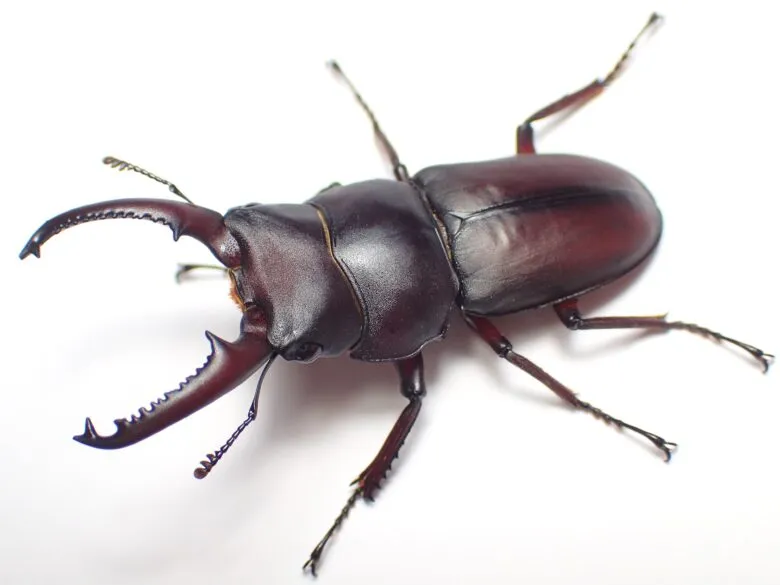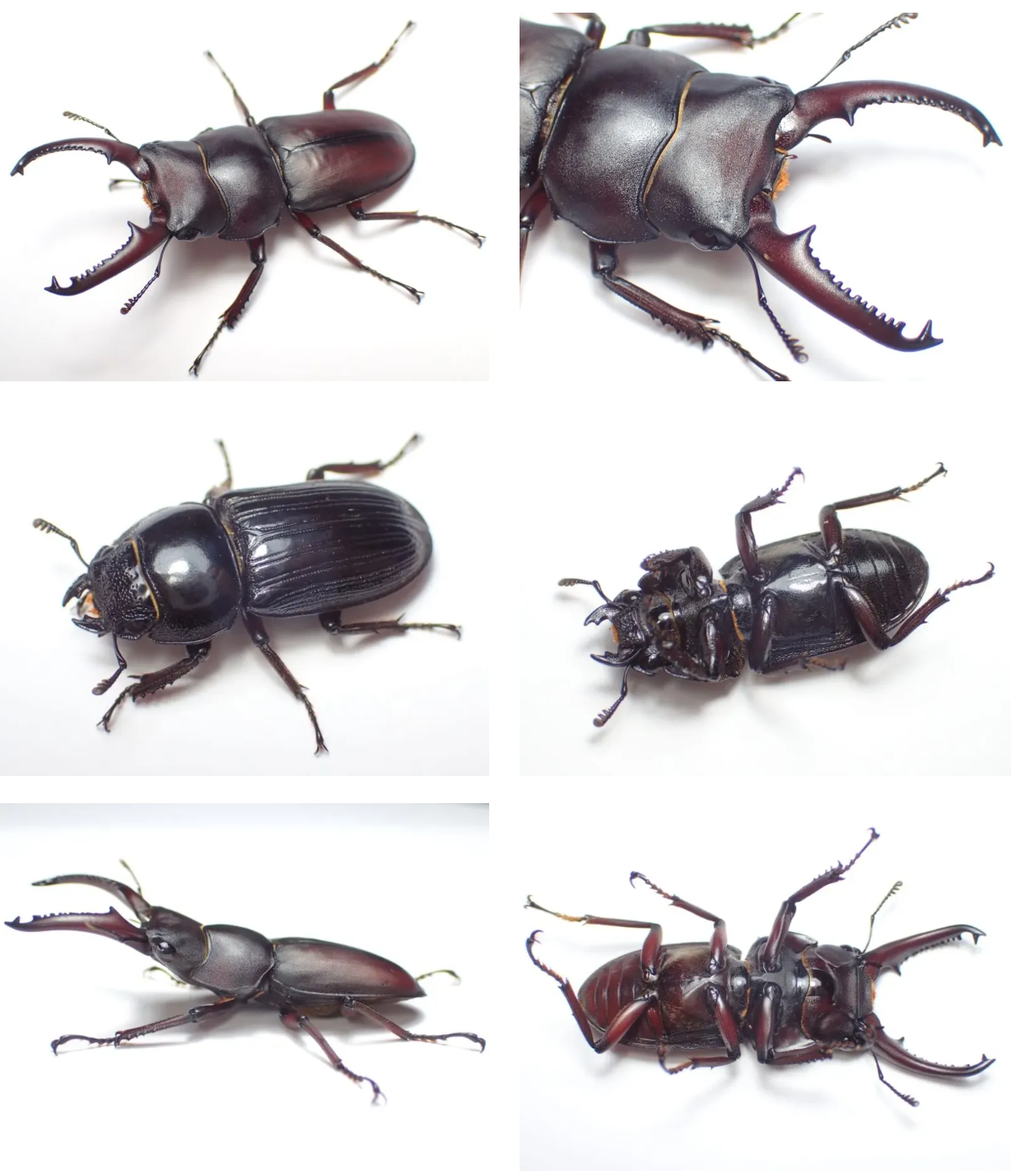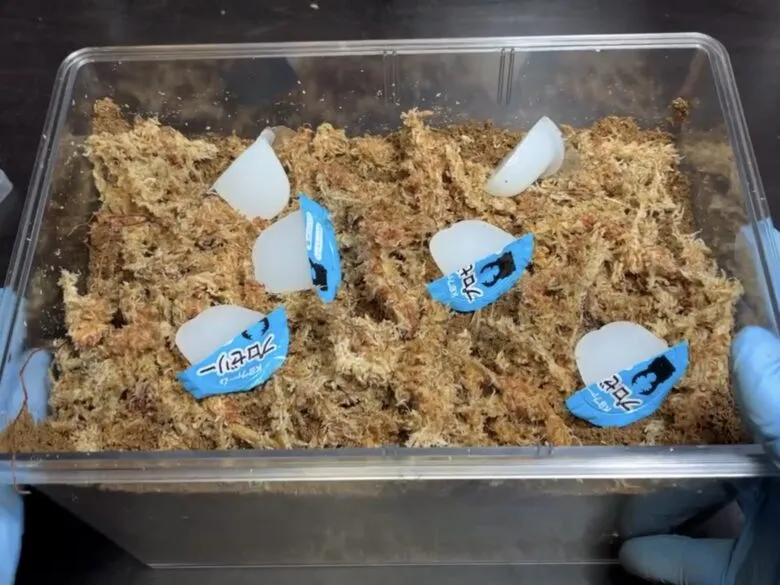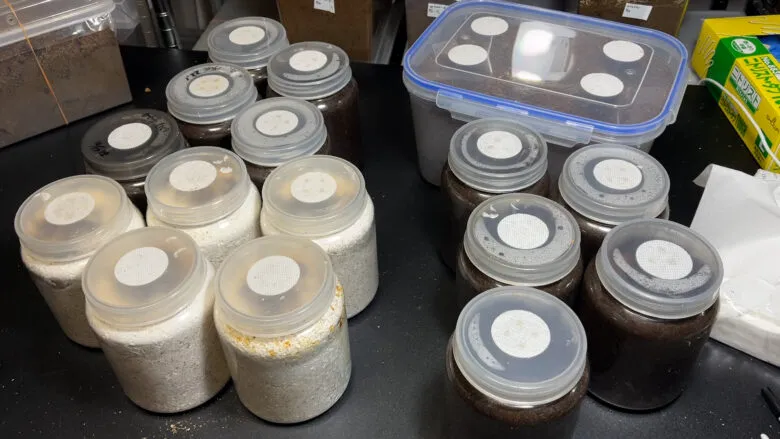
Japanese name: Meridionalis stag beetle (Meridionalis striped stag beetle)
Scientific name: Dorcus meridionalis Nagai et Maeda, 2010
Distribution: Northern Vietnam
Wild rarity: Rare ★★★★☆☆
Size: ♂19.4-45.2mm ♀19.7-24.6mm
Breeding record: 49.6mm (2023)
Wild record: 45.2mm
Difficulty of rearing: Normal★★★☆☆☆☆
Rearing temperature: 18-24℃
Adult lifespan: About 1 year?
Larva period: About 6 months to 1 year?
remarks
A small Dorcus that lives in northern Vietnam, it was previously described as a subspecies of Tanaka's stag beetle, and is listed as an independent species in Fujita's (2010) illustrated guide. The Japanese name varies from ~Kokuwagata to ~Sujikuwagata depending on the source, but the most commonly used Japanese name is Meridionaliskokuwagata, so for now we will call it Kokuwagata...
Its appearance is reminiscent of a flathead stag beetle with a brown body and jaw, and its size is similar to that of a Japanese striped stag beetle, and it seems to be closer to the striped stag beetle than the Japanese small stag beetle in terms of ecology. The female has a deep, clear stripe on her back.
It seems that breeding them is not that difficult, and a temperature of around 24°C is fine. They seem to lay eggs on both mats and wood.
According to the 2023 breeding record comment, the larval period is about 8 months when kept at around 23 ° C on 430 ml of pre-made fermented mat.
It is unclear whether the mat or mycelium is more suitable, but since there are few people breeding this species for record purposes, I think there is still room for further testing and size increase.

2023/8/12 Obtained a pair of adults
I got a pair of wild-caught adults from SMIS's 5000 yen lucky draw.
Vietnam Ha Giang WD. Arrived in July of the same year.
2023/8/27 Egg laying set up
I embedded three sticks of bacterial material into a Clear Slider Large at spawning time and set it up
, and since it was a wild-caught female, I decided that she had already mated and put her in the set alone.

2023/11/19 Egg laying set separation
After a month from the set, eggs and first instar larvae could be seen on the bottom of the case, so at that point the parent female was isolated in a second set. After about two months of isolation, some second instar larvae could be seen on the side of the set, so they were separated.

It appears that eggs are laid both on the mat and the wood, and more than 10 larvae were obtained from the mat and several from the wood, for a total of 20 2nd- to 3rd-instar larvae from this set.

The second set that was put together midway was the most tightly packed egg-laying set with no wood, but several eggs and first instar larvae were found at the bottom of the case.
The larvae obtained this time were put into 800ml. I will try three patterns: fermented mat only, mycelium only, and multiple fermented mats (2 larvae). The article on the breeding record was about breeding with fermented mats, but there were many larvae that ate their way through the material, so I have the impression that they will grow with mycelium as well, but what do you think?






Leave a comment Use WYSIWYG